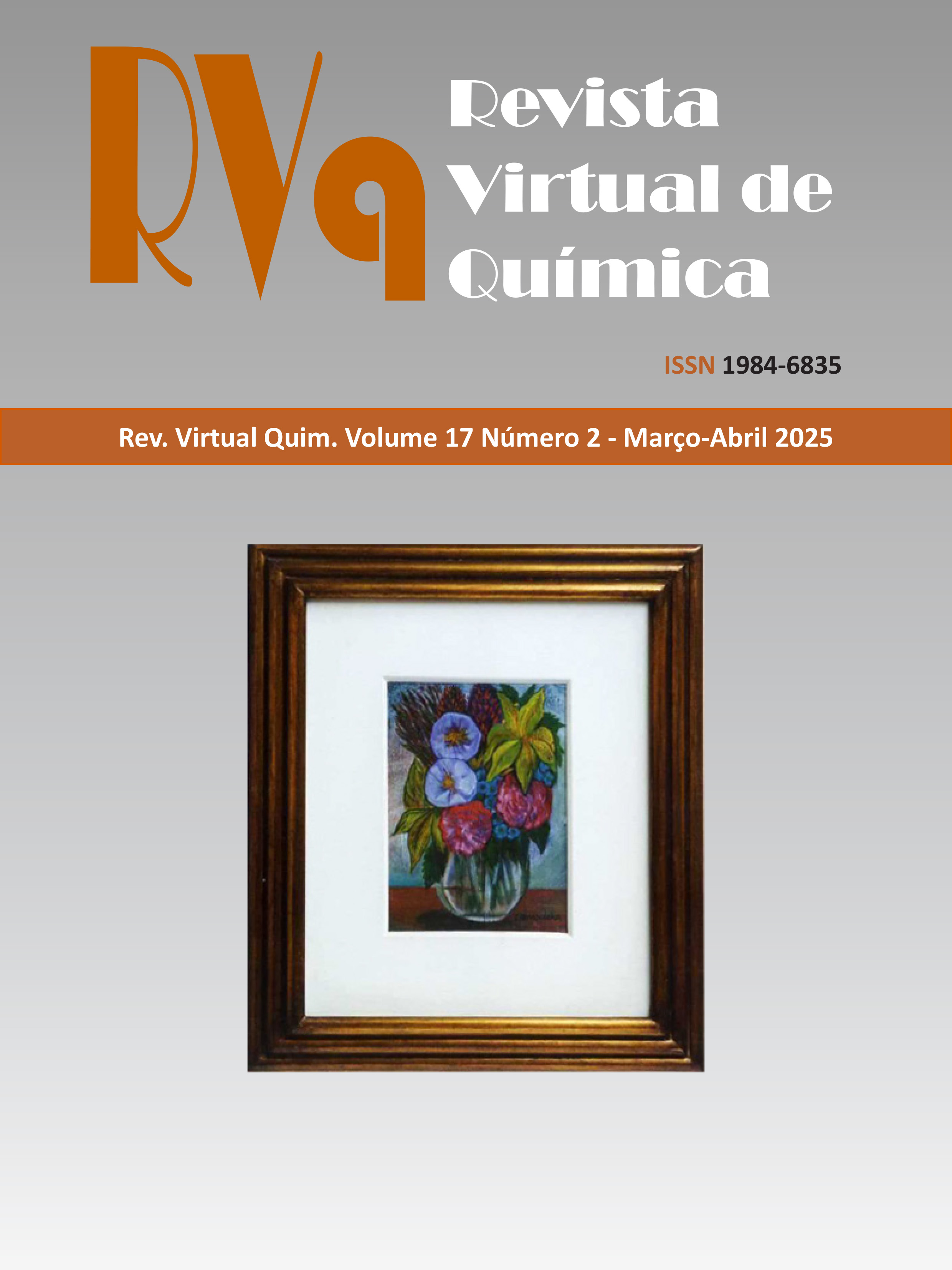Estudo de Catalisadores Heterogêneos Sintetizados a Partir de Resíduos de Rochas Ornamentais Aplicados Para Obtenção de Biodiesel
DOI:
https://doi.org/10.21577/1984-6835.20240054Resumo
The processing of ornamental stones generates tons of waste that are either discarded into the environment
or deposited irregularly in landfills, leading to serious environmental problems. This study aimed at
investigating the synthesis of heterogeneous catalysts supported on a porous carbon matrix using ornamental
stone waste as source of calcium and magnesium oxides. Various synthesis routes (coprecipitation, Pechini
method and wet mixing) were explored and all materials were thermally treated at 800 °C for 3 h. The
catalysts were characterized by X-ray diffraction, thermogravimetry, textural analysis, solid-state 23Na
nuclear magnetic resonance spectroscopy. The catalytic activity of the catalysts was evaluated in the
transesterification reaction of soybean oil with methanol to obtain biodiesel. The ornamental stone waste
used in this work contains 22.6 wt.% of Ca and 9.0 wt.% of Mg, primarily composed of CaMg(CO3)2 and
CaCO3. The catalyst obtained starting from the mixture of NaOH, activated carbon, and ornamental stone
waste in an aqueous suspension is composed of carbon-supported CaO, MgO, and Na2CO3 particles, with
an ash content of 88,5% and a specific surface area of 151 m2 g-1, exhibiting a relatively large efficiency
in terms of biodiesel conversion (80%). The results demonstrate the feasibility of using ornamental stone
waste to develop heterogeneous catalysts supported on activated carbon via the proposed synthesis route
to deposit the particles of calcium and magnesium oxides.
Downloads
Arquivos adicionais
Publicado
Edição
Seção
Licença
Copyright (c) 2025 Revista Virtual de Química

Este trabalho está licenciado sob uma licença Creative Commons Attribution-NonCommercial-NoDerivatives 4.0 International License.
Autores que publicam nesta revista concordam com os seguintes termos:
Os direitos autorais para artigos publicados nesta revista são do autor, com direitos de primeira publicação para a revista. Em virtude do acesso público, os artigos são de uso gratuito em aplicações educacionais e não-comerciais desde que com reconhecimento da autoria e da publicação nesta revista.

